Banff National Park
When railroad workers discovered a hot spring in 1883, it created a movement that culminated in Banff National Park, Canada’s first national park. The park is filled with stunning scenery provided by the majestic Canadian Rockies, valleys, forests and abundant wildlife (think mountain goats on the roads, moose, elk and bears).
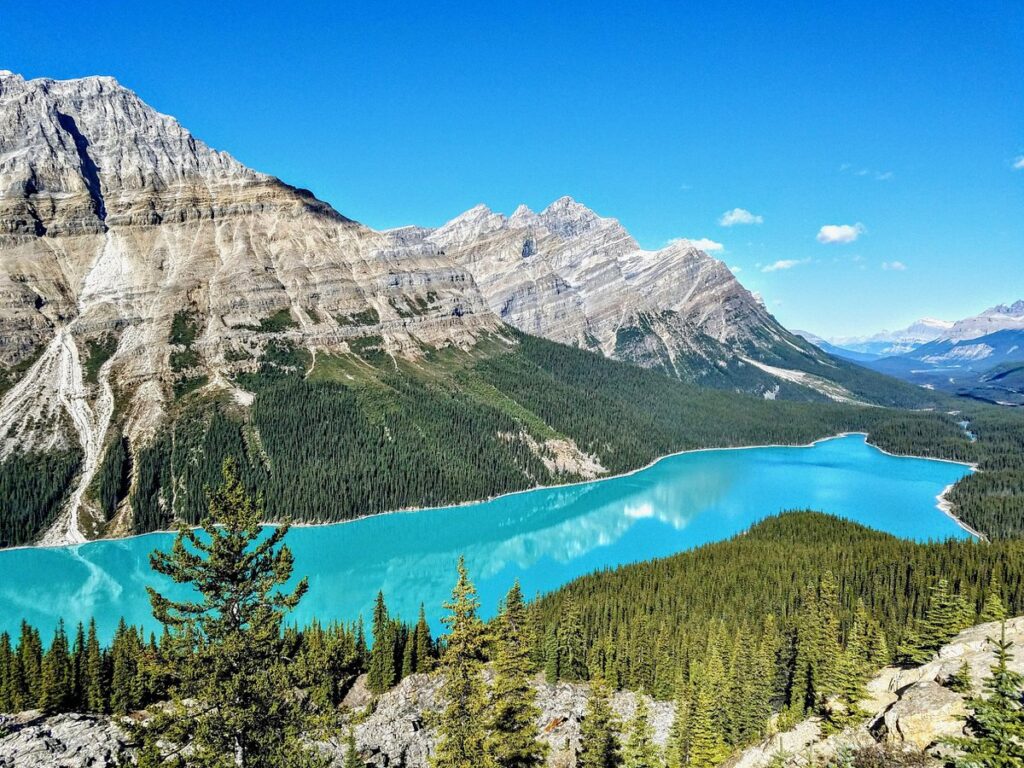

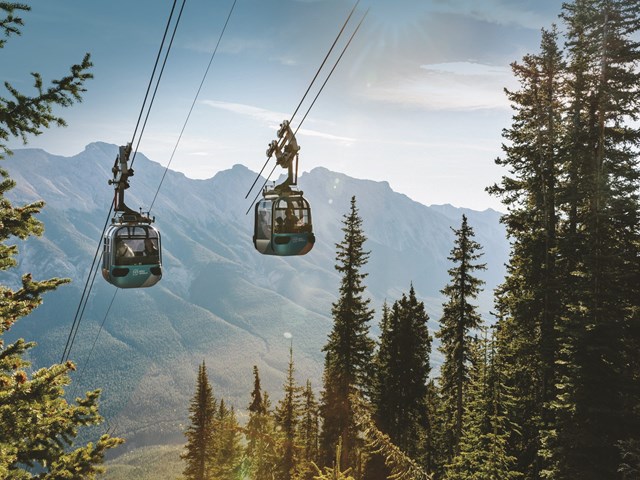
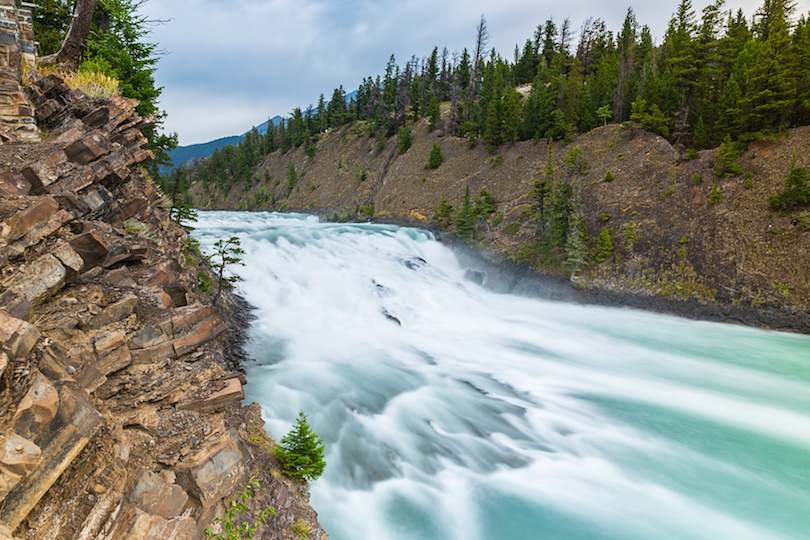
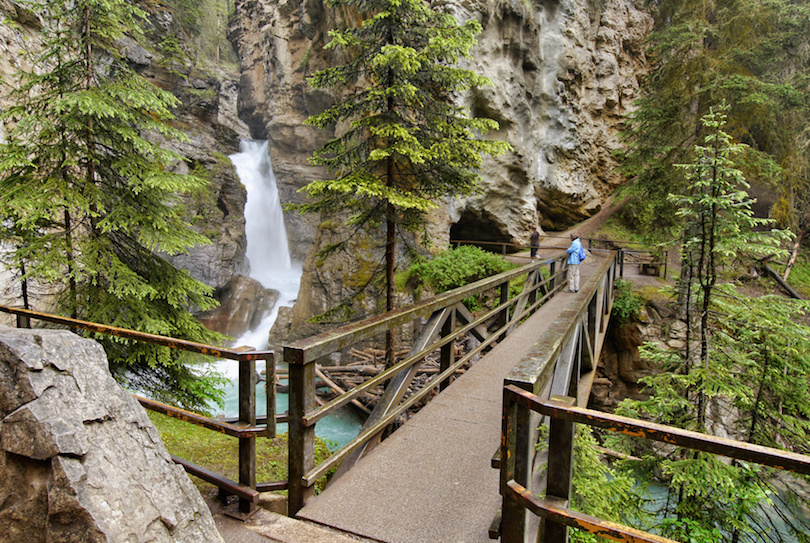
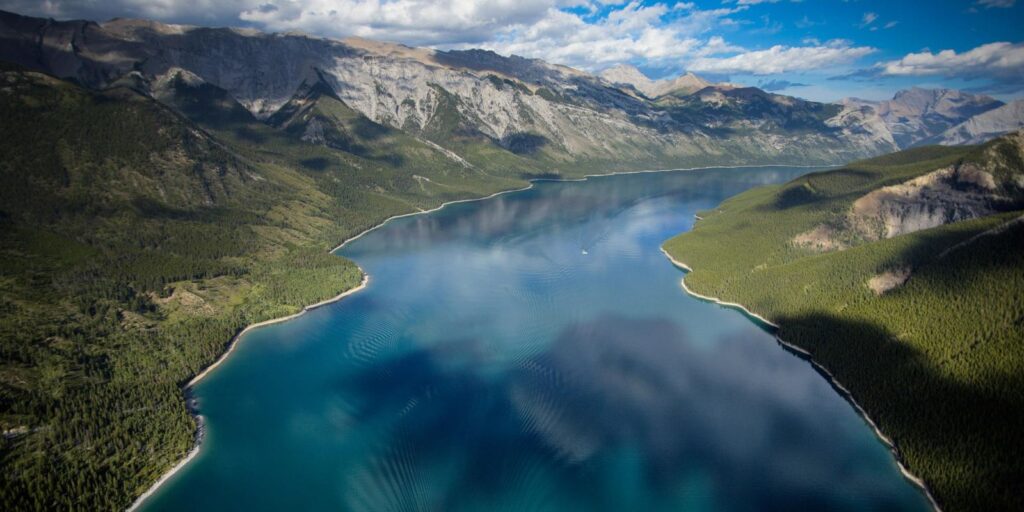



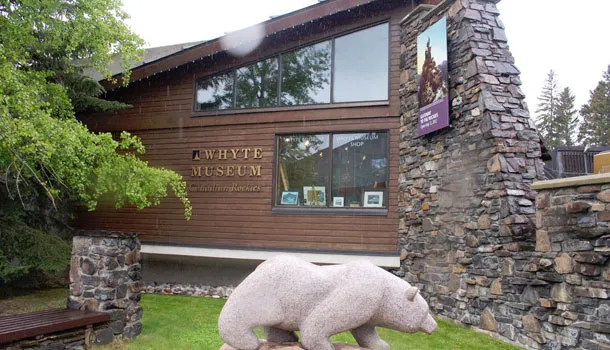
Top 10 things to do in Banff National Park :
- Bow Falls: Movie buffs may recognize Bow Falls as the falls Marilyn Monroe and Robert Mitchum went over while escaping from Indians in 1953’s River of No Return. The 9-meter (30-foot) high falls is a major waterfall on the scenic Bow River that joins with the Spray River just outside of Banff. Visitors can get a better view of the roaring rapids by taking a 0.75 mile trail along the river to the falls.
- Whyte Museum: The Whyte Museum of the Canadian Rockies is a good place for travelers to kick off their visit to the majestic Canadian Rockies. The museum originated with a collection of paintings, documents and other archival materials amassed by Peter and Catharine Whyte starting when the couple moved to Banff in the 1930s. It is dedicated to preserving the history of Banff and the culture of the Canadian Rockies.
- Banff Upper Hot Springs: Banff Upper Hot Springs is the perfect place to relax after a day on the hiking or ski trails. Visitors have been coming to this Banff attraction since the 1880s to bask in the therapeutic mineral waters, though First Nations were doing that long before the railroad opened up this section of Canada; the native people considered the hot springs a sacred place. Banff Upper Hot Springs is the highest in Canada. Water temperatures are maintained between 98 and 104 degrees Fahrenheit (37-40 degrees Celsius).
- Johnston Canyon: Johnston Canyon was caused by erosion of limestone rock as Johnston Creek empties into the Bow River. The main activity at Johnston Canyon is to hike to the Lower Falls, Upper Falls and Ink Pots. Getting to the Upper Falls involves a 2.7 km (1.7 mile) hike that starts from behind the Johnston Canyon Resort. This trail is considered one of the busiest in the Canadian Rockies, with hundreds of tourists making the 45-minute hike every day.
- Lake Minnewanka: The scenic blue Lake Minnewanka has much to offer the outdoors recreationalist: hiking, mountain biking, rock climbing and booing. Winter activities include cross-country skiing and snowshoeing. It is a nature photographer’s dream, with gorgeous scenery and an abundance of wildlife, including deer, bears, mountain sheep and elk. Located just 13 km (8 miles) from the town of Banff it is a popular escape from downtown.
- Banff Gondola: Travelers will want to make sure they have plenty of memory cards before they board the Banff Gondola from. That’s because the views from the four-passenger gondola cars are spectacular going to and from the top of Sulphur Mountain. But the views of six mountain ranges from the observation deck are even more incredibly stunning.
- Peyto Lake: Melting glaciers are responsible for the gorgeous turquoise waters of Peyto Lake, making it popular with photographers. The lake, which sits at an elevation of 1,900 meters (6,100 feet), is accessible from the Columbia Icefields Parkway. Considered one of the prettiest lakes in the world, Peyto Lake is best seen from Bow Summit, about 39 km (24 miles)from Lake Louise, on the parkway. It takes about 15 minutes to walk a paved trail from the parking lot to an observation deck overlooking the lake. The lake is so popular with tourists that it can sometimes be difficult to find a spot to see the lake on the viewing platform.
- Sunshine Meadows: Getting to Sunshine Meadows, high in the Canadian Rockies atop the Continental Divide and the border between Alberta and British Columbia, might be a challenge, but the spectacular scenery is worth the effort. The meadows are considered to have the best alpine hiking and scenery in the Canadian Rockies. As spring turns into summer the meadows are in full bloom and ablaze with colorful wildflowers.
- Lake Louise: With its emerald green waters, Lake Louise is an amazing sight. Visitors can feast on its pristine beauty as they hike around the lake, named for British Queen Victoria’s fourth daughter, Princess Louise Caroline Alberta. This iconic lake is one that needs to be experienced in all seasons to really appreciate the lush greens of summer and the snow-capped mountains in winter. Fairmont’s Chateau Lake Louise, a luxury resort hotel built at the turn of the 20th century by the Canadian Pacific Railway, is located on Lake Louise’s eastern shore. Lake Louise is also a winter sports paradise, home to one of the largest ski resorts in North America. The best way to get here is by following the Bow Valley Parkway, a 48-kilometer (30-mile), scenic, secondary highway paralleling the Trans-Canada Highway between the town of Banff and the village of Lake Louise.
- Moraine Lake: Fed by glaciers, Moraine Lake is known for its stunning blue waters. The coloration is thanks to light refracting off the glacier flour. Located just 12.5 km 7.5 miles) from Lake Louise, Moraine Lake is surrounded by the beauty of the impressive Canadian Rocky Mountains. There are a number of hiking trails around Moraine Lake. Just be sure to check the trail conditions before you set out to go as they are sometimes restricted because of grizzly bear activity. One of the most popular trails is the Rockpile trail, a short path with little gain in elevation, and yet rewards visitors with one of the most beautiful views in Banff National Park. From the top of Rockpile, you’ll see the Valley of the Ten Peaks, the ten glacier-cut peaks that surround Moraine Lake. This includes Mt. Temple, the third highest peak in Banff National Park, at 3549 meters (11,636 feet).
Let us know your reviews about Banff National Park.


